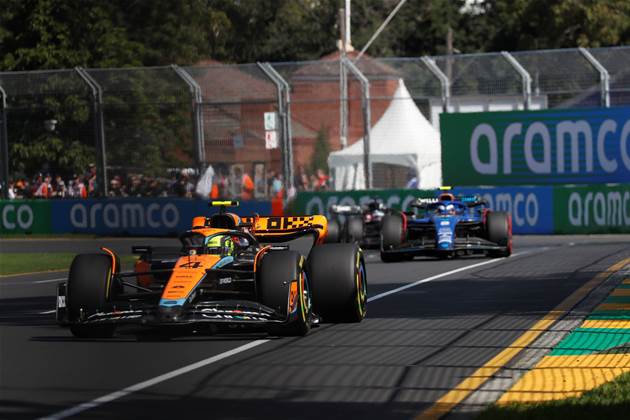Formula 1 racing is becoming more digitally enabled where nearly every major team is implementing some form of technology to enhance its racing.

The McLaren Formula 1 Racing team uses a portable data centre or “IT rig” which harnesses data and analytics to assist with decision-making on race day.
Edward Green, head of commercial technology at McLaren Racing spoke to Digital Nation on how its IT rig is the “third car” for the team.
Green said the IT rig enables the garage to see and process all the telemetry from their two Formula 1 cars. The IT rig has two 38 rack units worth of compute network storage, radio equipment and UPS.
“It is the brain and the beating heart in the garage, which processes all the information and all the data as it comes in. We have two IT engineers that support it as it travels around the world,” he explained.
“As soon as it arrives at the track, we wheel it into the back of the garage and connect the power network. All of the infrastructure in it is then remotely commissioned from back in the McLaren Technology Centre in the UK. The team on the ground support it throughout the weekend.”
Green said the ability to process data locally at the track keeps them at low latency.
He said, “Taking the IT rig to the edge has helped us in our understanding and decision-making, with all the data that is coming in, we can read thousands of data points per second during the race.
“The IT rig helps our people process and analyse it, ultimately giving our team the best information and the best recommendations.”
Importance of sensors
At McLaren, they began with one sensor in the car that was measuring the temperature of the engine and are now using close to 300 in a single car.
Green said, “We are collecting everything from air pressures to temperatures, to surface speeds, to gearbox timings. Those sensors help us generate the understanding of the physical conditions on the car, but also a real-time digital twin of the car, as we can combine several sensors together to guess a third point of data.”
Green said the sensors are critical to what McLaren does as they help them understand driver safety, but also help them find where they have room for improvement and understand the car itself.
He said, “The data that the sensors generate is too much for any single person to look at, and through the use of models and machine learning, we can build ways for people to look and process that information, make sense of it to feed into historic or future models of how the car might perform.”
Green explained the importance of the cloud in implementing sensors.
“We are using the cloud across our esports team at the moment with Splunk,” he said.
“The cloud is an easy and natural way, whether our esports team are in their rigs at home, or here at the McLaren Technology Centre, in our shadow studio, or taking part in competitions we might take part in with the public.”
He added, “We can generate and take all of that data back up into Splunk’s cloud, and with the help of Google we can see how the team esports team are performing wherever they are.”
Technology, the second race
While the vehicles are doing laps around the grid, Green said behind-the-scenes technology has become the second race in Formula 1.
“We often talk about the race off the track being as important as the race on the track,” he said.
“The technology is not only there to support the team, make sure they can process data, understand how things are running. But it is also to optimise car design in the future, and help search for where those improvements need to be.”
Looking at the 2023 season, there are small margins between the teams, Green said technology is needed to help them find that extra tenth of a second.
“The technology gives the team as much data and information as possible, to ensure we can enhance our performance,” he explained.
“The improvements behind the scenes are massive, whether that is finding additional capabilities or exploring new technical areas. We are always looking for ways to make the team more efficient, and the advancements in technology are certainly helping us move forward.”
The world of F1 is a very complicated landscape, Green said, which means McLaren needs to understand how to optimise everything.
“It used to be about who had the most data, and it is definitely a game of who’s the most efficient, especially now with the cost cap,” he said.
Green said it all comes down to the people at the end of the day, but the IT is there to ensure driver safety, reliability, engineering and strategy.
“It gives the engineers flexibility, allowing them to run what they need out of the racetrack. It also connects us back to base, back to Mission Control here in Woking, UK, where we have additional team members supporting and analysing the data," he ended.



_(20).jpg&h=140&w=231&c=1&s=0)

.png&h=140&w=231&c=1&s=0)





 iTnews Executive Retreat - Security Leaders Edition
iTnews Executive Retreat - Security Leaders Edition












_(1).jpg&h=140&w=231&c=1&s=0)



